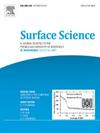Density functional theory study on the electrocatalytic performance of defected monolayer vanadium diselenide for oxygen evolution and reduction reactions
IF 2.1
4区 化学
Q3 CHEMISTRY, PHYSICAL
引用次数: 0
Abstract
The slow oxygen evolution reaction (OER) in the water-splitting driven by electricity, significantly impedes the hydrogen evolution reaction (HER). In this paper, density functional theory with D3 correction (DFT-D3) is utilized to explore the electrocatalytic potential of defected mono-layered VSe2 for the oxygen evolution reaction (OER) and oxygen reduction reaction (ORR). Intrinsic point defects, such as, selenium (D1) and vanadium (D2) vacancies, are introduced into 2D-VSe2. Possible sites, like, Se Top, V Top, vacancies and bridge positions are investigated for OER and ORR intermediates (O, OH and OOH). VSe2 monolayer with V vacancy (D2) shows significantly reduced overpotential for OER/ORR (η= 0.19 V/0.46 V), indicating enhanced catalytic activity. The OER performances of VSe2 monolayer with V vacancy (D2) (η= 0.19 V) surpasses those of IrO2 and RuO2 (η= 0.37 V and 0.56 V), and the ORR performances (η= 0.46 V) are comparable to those of precious Pt (η=0.4 V). The Pourbaix diagram further confirms the aqueous stability of VSe2 in various pH environments, establishing its potential as a robust catalyst for OER and ORR. These findings suggest that defect engineering, particularly vanadium vacancies, could significantly improve the electrocatalytic activity of VSe2 monolayers, contributing to the development of high-performance electrocatalysts.

缺陷单层二硒化钒析氧还原电催化性能的密度泛函理论研究
在电驱动的水裂解过程中,缓慢的析氧反应(OER)严重阻碍了析氢反应(HER)。本文利用带D3校正的密度泛函理论(DFT-D3)探讨了缺陷单层VSe2在析氧反应(OER)和氧还原反应(ORR)中的电催化电位。在2D-VSe2中引入了固有点缺陷,如硒(D1)和钒(D2)空位。研究了OER和ORR中间体(O, OH和OOH)的可能位点,如Se Top, V Top,空位和桥位。具有V空位(D2)的VSe2单层膜OER/ORR过电位显著降低(η= 0.19 V/0.46 V),表明其催化活性增强。具有V空位(D2) (η= 0.19 V)的VSe2单层膜的OER性能优于IrO2和RuO2 (η= 0.37 V和0.56 V), ORR性能(η= 0.46 V)与贵重Pt (η=0.4 V)相当。Pourbaix图进一步证实了VSe2在各种pH环境下的水稳定性,确立了其作为OER和ORR催化剂的潜力。这些发现表明,缺陷工程,特别是钒空位,可以显著提高VSe2单层电催化活性,有助于高性能电催化剂的开发。
本文章由计算机程序翻译,如有差异,请以英文原文为准。
求助全文
约1分钟内获得全文
求助全文
来源期刊

Surface Science
化学-物理:凝聚态物理
CiteScore
3.30
自引率
5.30%
发文量
137
审稿时长
25 days
期刊介绍:
Surface Science is devoted to elucidating the fundamental aspects of chemistry and physics occurring at a wide range of surfaces and interfaces and to disseminating this knowledge fast. The journal welcomes a broad spectrum of topics, including but not limited to:
• model systems (e.g. in Ultra High Vacuum) under well-controlled reactive conditions
• nanoscale science and engineering, including manipulation of matter at the atomic/molecular scale and assembly phenomena
• reactivity of surfaces as related to various applied areas including heterogeneous catalysis, chemistry at electrified interfaces, and semiconductors functionalization
• phenomena at interfaces relevant to energy storage and conversion, and fuels production and utilization
• surface reactivity for environmental protection and pollution remediation
• interactions at surfaces of soft matter, including polymers and biomaterials.
Both experimental and theoretical work, including modeling, is within the scope of the journal. Work published in Surface Science reaches a wide readership, from chemistry and physics to biology and materials science and engineering, providing an excellent forum for cross-fertilization of ideas and broad dissemination of scientific discoveries.
 求助内容:
求助内容: 应助结果提醒方式:
应助结果提醒方式:


